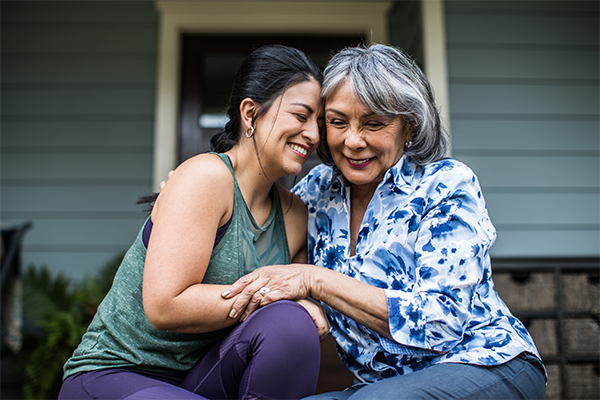What can cause hair loss in women?
There are many reasons why you may be experiencing hair loss. Below are a few of the reasons:
Hereditary/Genetic Hair Loss
Female pattern hair loss, also known as androgenetic alopecia (AGA) is an inherited condition, which reduces the time that the hair spends actively growing. AGA causes the hair follicles to become smaller and slowly, thinner, lighter hair replaces your usual hair. In female pattern hair loss, the most prominent hair loss happens on the top of the head and along the parting.

Alopecia Areata/ Auto-immune Disorder
A type of non-hereditary hair loss is alopecia areata, an auto-immune disorder that causes defined patches or complete hair loss that may happen rapidly. Alopecia Areata can result in total hair loss, which can prevent hair from growing back. When the hair does grow back, it’s possible that is will fall out again. There’s currently no cure for alopecia areata, but there are treatments that may help hair grow back and prevent future hair loss, as well as ways to cover up the hair loss that you are experiencing. If you experience this type of hair loss consult your doctor for treatment.
Stress, Diet, Hormonal Imbalance / Telogen Effluvium
Temporary hair loss, known as telogen effluvium, happens when stress, diet, a hormonal imbalance, or a traumatic event, causes hair follicles to remain in the resting stage. It can result in increased hair shedding and hair loss over the whole head. Once the root cause has been corrected, hair should return to its previous thickness. An underactive thyroid may cause or contribute to telogen effluvium / temporary hair loss. If you experience this type of hair loss consult your doctor for treatment.

Hair Loss Due To Over Styling/ Traction Alopecia
We all love to style our hair. However, braids, ponytails, cornrows, and extensions can all pull on your hair, resulting in hair loss that can lead to a condition known as traction alopecia. Early on, you may experience little bumps on your scalp that look like pimples. As the condition progresses, the main sign of traction alopecia is missing and broken hairs with the front and sides of your scalp most often affected. However, depending on your normal hair style, you may also experience hair loss on other areas of your scalp. Traction alopecia can be reversed if you opt for hairstyles that put less tension on your hair. If you don’t intervene soon enough, the hair loss may be permanent. If you experience this type of hair loss consult your doctor for treatment.
Postpartum Hair Loss
Changes in hormone levels can cause hair loss in women. A fall in estrogen levels after birth cause more hair follicles to go into the resting phase, known as post partum alopecia. This type of hair loss is usually short lived and women that experience an unusual amount of hair loss after giving birth will usually see things return to normal after 6 to 12 months. If you experience this type of hair loss consult your doctor for treatment.
Risk factors
Along with the causes of hair loss mentioned above there are a number of factors that can increase your risk of hair loss, including:
- A family history of hair loss on your mother's or father's side
- Age
- Significant weight loss
- Certain medical conditions, such as diabetes and lupus
- Stress
- Poor nutrition
For women who are experiencing hereditary hair loss, Regaine® for Women hair regrowth products are scientifically proven with the active ingredient minoxidil to help stop and even reverse hereditary hair loss. They reactivate your inactive hair follicles and help to promote fuller and more voluminous hair.
When to see a doctor
You may feel embarrassed to go see your doctor if you have hair loss, but you should see them if you are distressed by persistent hair loss and want to pursue treatment options. You should also talk to your doctor if you notice any sudden, patchy hair loss or more than usual hair loss when combing or washing your hair. Sudden hair loss could be a sign of an underlying medical condition that requires treatment.
If you are not sure how to go about speaking to your doctor about your hair loss, we have come up with 4 steps to help you before and during your consultation

Ready to try REGAINE®
REGAINE® is scientifically proven to help stop and even reverse hair loss in women. The earlier you start using REGAINE® the higher your chances of seeing results are.




